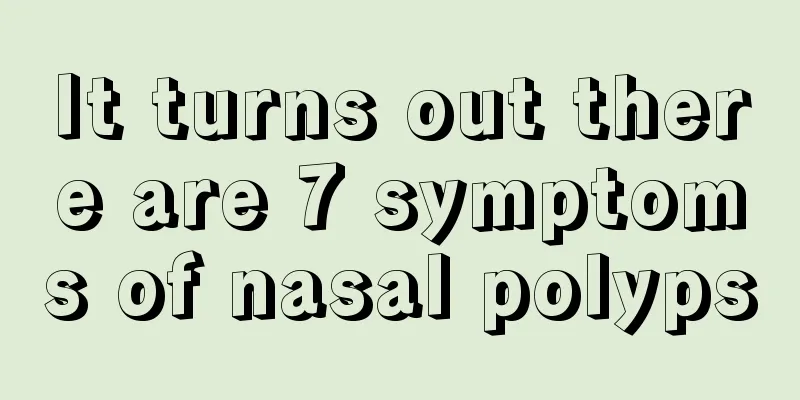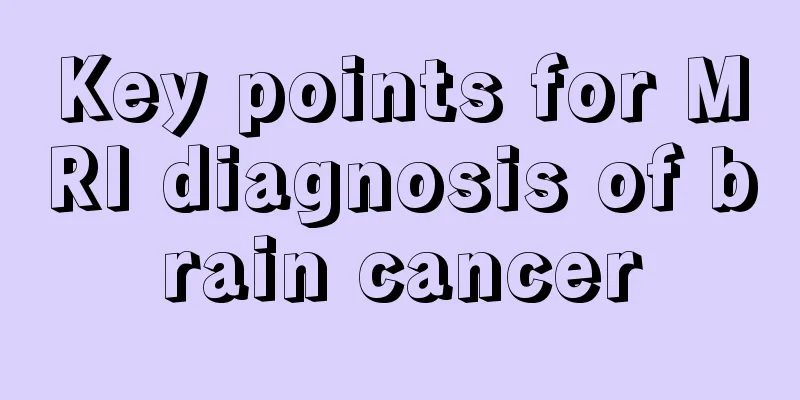It turns out there are 7 symptoms of nasal polyps

|
Nasal polyps are a relatively common disease among the adult population and are very harmful to human health. Therefore, it is particularly important to understand the symptoms of nasal polyps and treat them in a timely manner. In fact, there are seven symptoms of nasal polyps. The first one is mucous polyps, which are pink in color, with thin strips mostly coming from the middle nasal meatus, and are soft and movable to the touch. 1. Symptoms of nasal polyps 1. Mucous polyps, which are quite similar to peeled grapes or fresh lychee flesh, have a smooth and translucent surface, are pink in color, and have thin strips mostly coming from the middle nasal meatus, which are soft and movable to the touch. 2. There may be runny nose, headache, tinnitus, stuffy ears and hearing loss. 3. Fibrous polyps appear grayish white and have a smooth surface. They feel firm to the touch and are less likely to bleed. 4. Hemorrhagic polyps (less common) have smooth surface, are congested, feel soft and bleed easily 5. Persistent nasal congestion, decreased sense of smell, blockage nasal sound, snoring during sleep and mouth breathing. 6. If nasal polyps increase in number and become larger and are not treated for a long time, the nasal bridge may widen and form a "frog nose". 7. Multiple polyps often come from the ethmoid sinus, and single polyps often grow from the maxillary sinus and fall into the posterior nasal cavity, which is called "posterior nasal polyp." 2. Early symptoms of nasal polyps We all know that for any disease, if it is detected and treated early, the cure rate is extremely high. Therefore, it is necessary to understand the early symptoms of nasal polyps. Let’s take a look at the early symptoms of nasal polyps. 1. Persistent nasal congestion. The cause of nasal congestion is the poor circulation of capillaries in the nasal cavity, which causes the capillaries to expand and cause nasal congestion, decreased sense of smell, obstructive nasal sounds, snoring during sleep and mouth breathing. 2. The patient will experience runny nose, headache, tinnitus, and stuffy ears. 3. Hemorrhagic polyps (less common) have a smooth surface, are congested, feel soft and bleed easily. 4. Initially, there seems to be mucus in the nose that cannot be blown out. At night, there may be obvious nasal congestion, resulting in mouth breathing, which may lead to chronic pharyngitis over time. 5. If a giant polyp blocks the posterior nasal cavity or even protrudes into the nasopharynx, it may also cause hearing loss. 6. The secretions of patients with nasal polyps are mostly serous, and if there is a concurrent infection, there may be purulent secretions. If patients do not take timely treatment measures after becoming ill, it will not only aggravate the symptoms of nasal polyps, but also cause other complications of nasal polyps. Common ones include otitis media and damage to the functions of heart, pharyngitis, lungs and other organs. Some may even become malignant; therefore, once nasal polyps appear, they must be treated promptly. |
<<: It turns out that there are 9 symptoms of allergic rhinitis
>>: What are the symptoms of chronic pharyngitis? It turns out there are these three types
Recommend
What should I do if my off-white clothes turn yellow?
Beige clothes will turn red after being worn for ...
Why do I have urinary incontinence when coughing?
Urinary incontinence when coughing is because the...
Can cancer metastasize to the liver be cured? It cannot be cured, but you can take medicine to control the disease
Can cancer metastasis to the liver be cured? Canc...
What medicine should I take if I am infected with Norovirus
Norovirus is a very common virus and is also a vi...
What is the chance of curing benign brain cancer?
It is a pity to suffer from brain tumors, because...
Can I use Germanium Stone Steam Steaming every day?
Steaming as a health-care method is well known to...
What facial cleanser is good for acne
No matter how beautiful your facial features are,...
What to do if you have breast cancer
Breast cancer is the most common malignant tumor ...
What is the effect of earlobe bloodletting
Earlobe bloodletting is a medical method with a w...
What are the three types of pain in the middle stage of lung cancer
What are the three types of pains in the middle s...
Why does folliculitis occur? What is the reason
Folliculitis is a skin disease that troubles many...
How many people die from uterine cancer every year in the world?
What percentage of deaths worldwide are caused by...
How to make your own lipstick
Lipstick can be said to be the favorite of female...
Be careful! Emotional depression is one of the causes of lung cancer
In real life, with the accelerated pace of societ...
Tongue feels hot and burning
A hot and burning tongue may be caused by getting...









